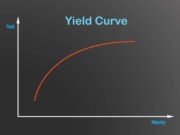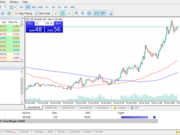Definition
A certificate of deposit is a time deposit, a financial product commonly sold in the United States and elsewhere by banks, thrift institutions, and credit unions.
Certificate of Deposit
Certificate of Deposit, CD, is considered one of the most commonly used low-income low-risk investment options. CDs are offered by commercial banks or credit unions as certificate that will entitle the depositor to receive a certain amount of interest until a particular amount of time.
The interest rate is fixed on the total amount of the capital. This means the amount of deposit will increase overtime. CD restricts the depositors from withdrawing the amount prior to the maturity date, which can be a few months or even years. Early withdrawal may subject investor to a penalty.
How Does CDs Work?
Let’s elaborate using an example of depositor who purchases a Certificate of Deposit worth $1000 with an annual interest rate of 5% for one year. At the end of that year, the total amount in depositor’s account will be the initial $1000, plus the 5 percent interest that amounts for $50, i.e. $1050. So the bigger the capital, the higher the profit.
However, this is just the general type of CD commonly offered by the banks. Many institutions are now offering a wide range of products that work slightly different due to different terms.
Different Types of Certificates of Deposits
Some of the common types of CDs other than the traditional ones are as follows.
- Bump Up CDs – Allows investors to bump up the interest rate in case rates in the marketplace go higher.
- Bull CDs – Investors can take advantage of the bull market for an underlying index and increase the rate.
- Callable CDs – Issuing institute has the right to call back a CD in case the interest rates drop. The terms include a time frame and call price.
- Liquid CDs – Liquid CDs enable investors to withdraw a certain portion of their investments without paying a penalty.
CDs are safe because they protect the capital no matter the market conditions and regardless of how the institution issuing the certificate fares in the future. While it is a low-return option, investors often use it along with other strategies when hedging and speculating.
Further Reading
- The volatility of Japanese interest rates: evidence for Certificate of Deposit and Gensaki rates – www.sciencedirect.com [PDF]
- An economic analysis of bank-issued market-indexed certificate of deposit–an option pricing approach – www.inderscienceonline.com [PDF]
- The behaviour of certificate of deposit rates in the UK – academic.oup.com [PDF]
- The process of financial innovation – www.jstor.org [PDF]
- Asymmetric adjustment in the prime lending–deposit rate spread – www.sciencedirect.com [PDF]
- Stabilizing large financial institutions with contingent capital certificates – www.elgaronline.com [PDF]
- Is There a Relationship between Financial literacy and Investment Decisions in the Kingdom of Bahrain? – journals.researchub.org [PDF]
- Retail bank deposits as quasi-fixed factors of production – www.jstor.org [PDF]


































